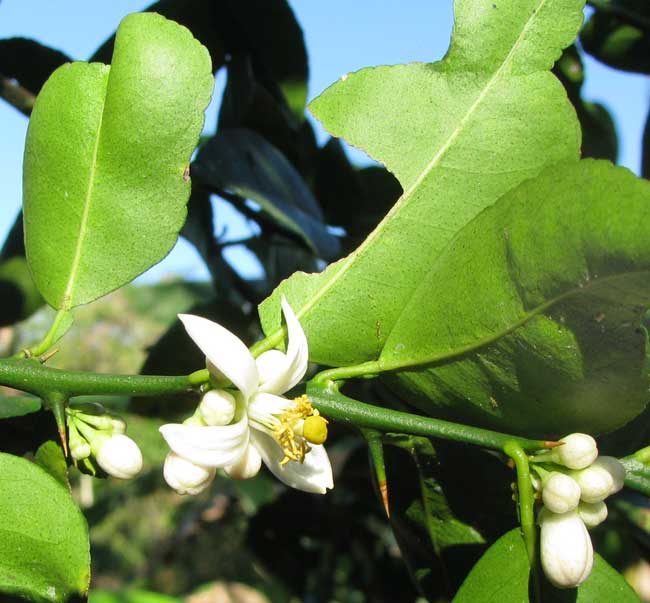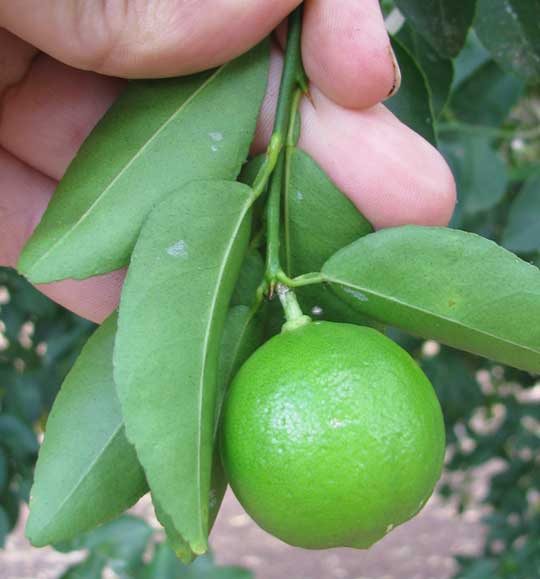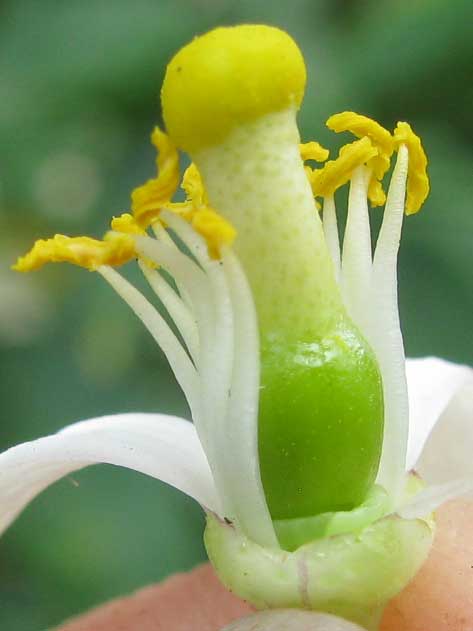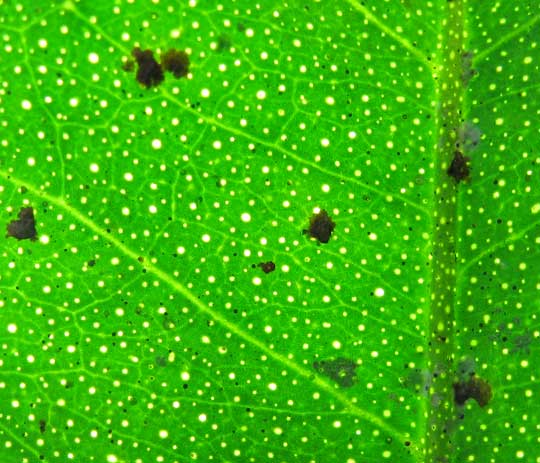Excerpts from Jim Conrad's
Naturalist Newsletter

from the January 2, 2011 Newsletter issued from Hacienda Chichen Resort beside Chichén Itzá Ruins, central Yucatán, MÉXICO; limestone bedrock, elevation ~39m (~128ft), ~N18.52°, ~W95.15°
MEXICAN or KEY LIME
Up North I never had a problem distinguishing between a lime and a lemon. A lime was a sweetish fruit tasting like lime Lifesavers and smelling like lime- scented aftershave. Lemons were yellow, very acidy fruits oval in shape with a low, broad nipple at one end. Down here I never see the thing that gringos call lemons, but they call fruits not seen up North "limones," or lemons, and "limas," or limes, are things more acid-puckery than any gringo lemon.
Wilfredo the milpa man refers to as a Lemón a tree beside the garden that my books call a Lime, even though that small tree's fruits are profoundly sour. You can see its small, two-inch-across (5 cm) flowers above.
The garden tree keys out to Mexican or Key Lime, CITRUS AURANTIFOLIA. Among its field marks are the relatively small size of the flowers and fruits and the fruits' exceeding sourness. A fruit is shown below:

A view of the ovary with its thick style topped by a spherical, yellow stigma, the ovary cupped within a low "annular disk," with stamens arising between the disk's base and the petals, is shown below:

That "annular disk" is a field mark for flowers of the Citrus Family, the Rutaceae, and so are abundant "pellucid dots," such as those in the Mexican Lime's leaf when held against the sun, as shown below:

Those pellucid dots are filled with the fragrant oils that smell so good when Citrus herbage is crushed. The oils repel many kinds of herbage-eating insects. The black splotches are tiny lichens growing on the leaf's surface.
Though the Maya regard this species as their own, calling it Limón Criollo, or "Native Lemon," Citrus aurantifolia is native to Asia's Indo-Malayan region. It's thought to have been introduced into Europe by Crusaders from Palestine, where it was brought by Arabs who got it in Asia. The Spanish introduced it into the New World, there being a report of it commonly growing in Haiti in 1520. It must have been brought to Mexico early during the Conquest.
So, the Maya have known the tree for nearly 500 years, during which time they well may have developed a distinctive Maya cultivar. The small, very acidy fruits, tasting and smelling not at all like a lime-flavored Lifesaver, but seeming to me just like the taste of a gringo lemon, make wonderful lemonade, and the laundry staff uses the fruit's juice to remove spots from the wash.
Purdue University provides a Mexican Lime page with more about the species' history, propagation and culture, varieties, and more, than you want to know at https://hort.purdue.edu/newcrop/morton/mexican_lime.html.
None of that helps me figure out, however, what Citrus species produces the sweet, fresh-smelling fruit I've always thought of as a lime. At least I'm not alone in my lemon/lime confusion. The Wikipedia Lime Page lists about 16 taxa commonly known as "lime." See the bottom of https://en.wikipedia.org/wiki/Lime_(fruit).